This is the first instalment of a two-part series on how and why our textbooks fail to meet the lofty ambitions set by national education policies. Click here to read part two.
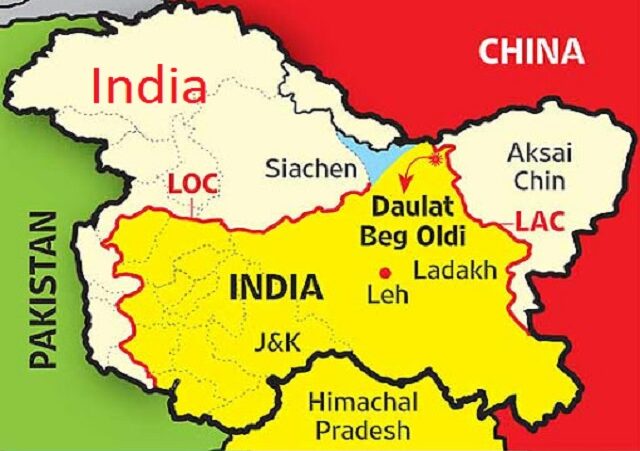
What’s shown in this picture? Does it look like something you’ve seen before? Now, take a look at the picture below. Do you know what it depicts?
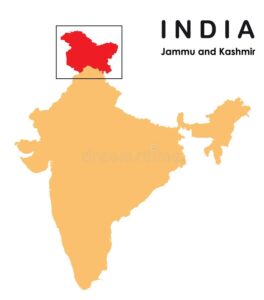
Yes, you guessed right. That’s a map of Jammu and Kashmir (J&K).
The first image you saw also depicts the territorial reality Jammu and Kashmir, except drawn and outlined as per the Line Of Control and Line of Actual Control. And yet, the second map, which fails to disclose this reality, is more popular and is the one we see in our geography textbooks in school. This seemingly simple outline shapes not only our own realities of India, but also of every child in our schools today.
When I first realised this, I wondered: what is the purpose of education? Why does it teach us what it does? And more importantly, who decides this purpose for our country’s millions of students?
✷✷✷
The National Education Policy (NEP 2020) released last year is a policy document which affects education at both the Central and state levels. To address the shortcoming of India’s education system, it suggests curriculum reforms—which will alter the content we learn in school, and hopefully, positively redefine the purpose of education. However, the NEP only outlines the need and direction for curricular reforms—it does not outline the specifics of these reforms.
The nature of the curriculum is instead specified in detail in the National Curricular Framework (NCF), 2005. It forms the backbone with which school education is planned and executed across the country: it defines what to teach (subjects and broad topics–like arithmetic in mathematics); how to teach (pedagogy); and when to teach (primary/secondary levels).
Yet in spite of this mandate, even the NCF remains a framework—it only puts in place broad guidelines for education, and does not delve into what teaching and learning in the classroom actually look like. These details are all defined by more familiar documents like grade-specific syllabi and textbooks [1].
This gap between curricular frameworks and classroom materials creates a stark disparity between the expected quality of textbooks and their actual quality. Despite having strong policies in place on paper, this also severely undermines the effectiveness of curricular reforms and results in poor learning outcomes. It’s no wonder that even after many decades, we are still trying to weed out rote learning from our classrooms!
And so, as policies are translated to classroom materials in India, there is a strong need for evidence-based curriculum design and reform during this process to mitigate these historical errors.
But first, what is a syllabus and what does it have to do with textbooks or curricula?
The syllabus goes into the greater details of classroom practice. It outlines specific skills and attitudes the learner must learn in each grade, the nature of classroom activities that teachers should use, and evaluation cycles too. Clearly, the syllabus is much more prescriptive than the curriculum framework, because it is the guiding document to create the textbooks that reach our classrooms. These textbooks, whether prepared by Central or state education boards, then go on to play a critical role in the learning that takes place inside the classroom.
A helpful analogy is that a curriculum defines a balanced diet, the syllabus is the diet plan, and the textbooks are the ingredients we need to make the diet. Finally, the ingredients are made into a palatable (or unpalatable?) dish by the teachers.
Take a look at these examples, to see how this transition happens.
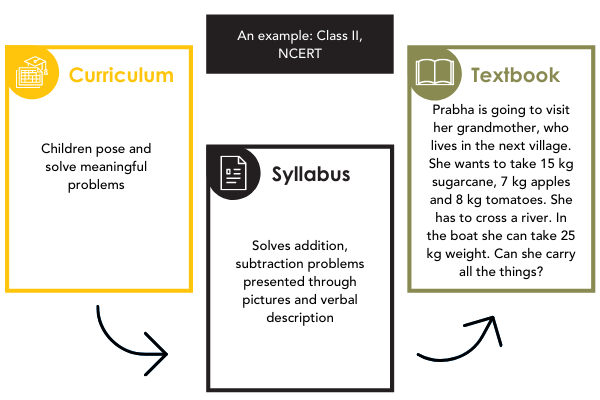
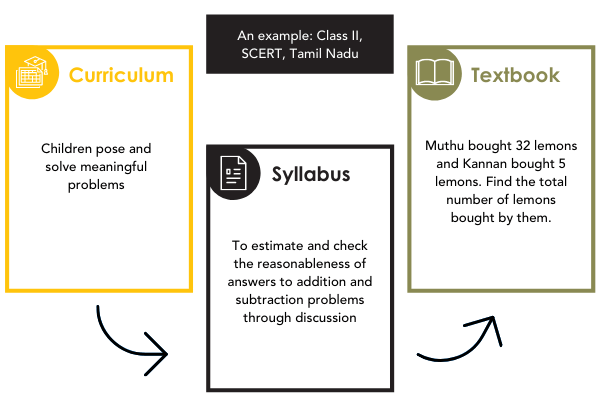
As we can see [2], there are a few key questions textbook authors keep in mind during this process:
- What does a “meaningful” problem mean?
- What does “discussion” entail? Does the teacher discuss the procedure (how to add), or the concept (why should the child choose to add), or both?
- What constitutes “estimation” in a problem? How do we evaluate “estimation”?
This is just the example of a single exercise, though. The textbook author also has to navigate a myriad of similar questions for each sentence written in the book. Then there are the pressures of completing the development of the textbook on time, and limitations on the textbook’s weight (and pages) as per the Right To Education Act. How do authors navigate all these uncertainties?
When information gets lost in translation
Most of the time, these issues result in a gap between the policy (curriculum and syllabus) and the material (textbooks) by design. That is, textbooks, for a variety of factors, are inherently not designed to match up to the lofty ideals of policy documents.
Take this example. The NCF, 2005 states that “The greatest national challenge for education is to strengthen our participatory democracy and the values enshrined in the Constitution. Meeting this challenge implies that we make quality and social justice the central theme of curricular reform.” Now, look at some of these images from the textbooks in our country.
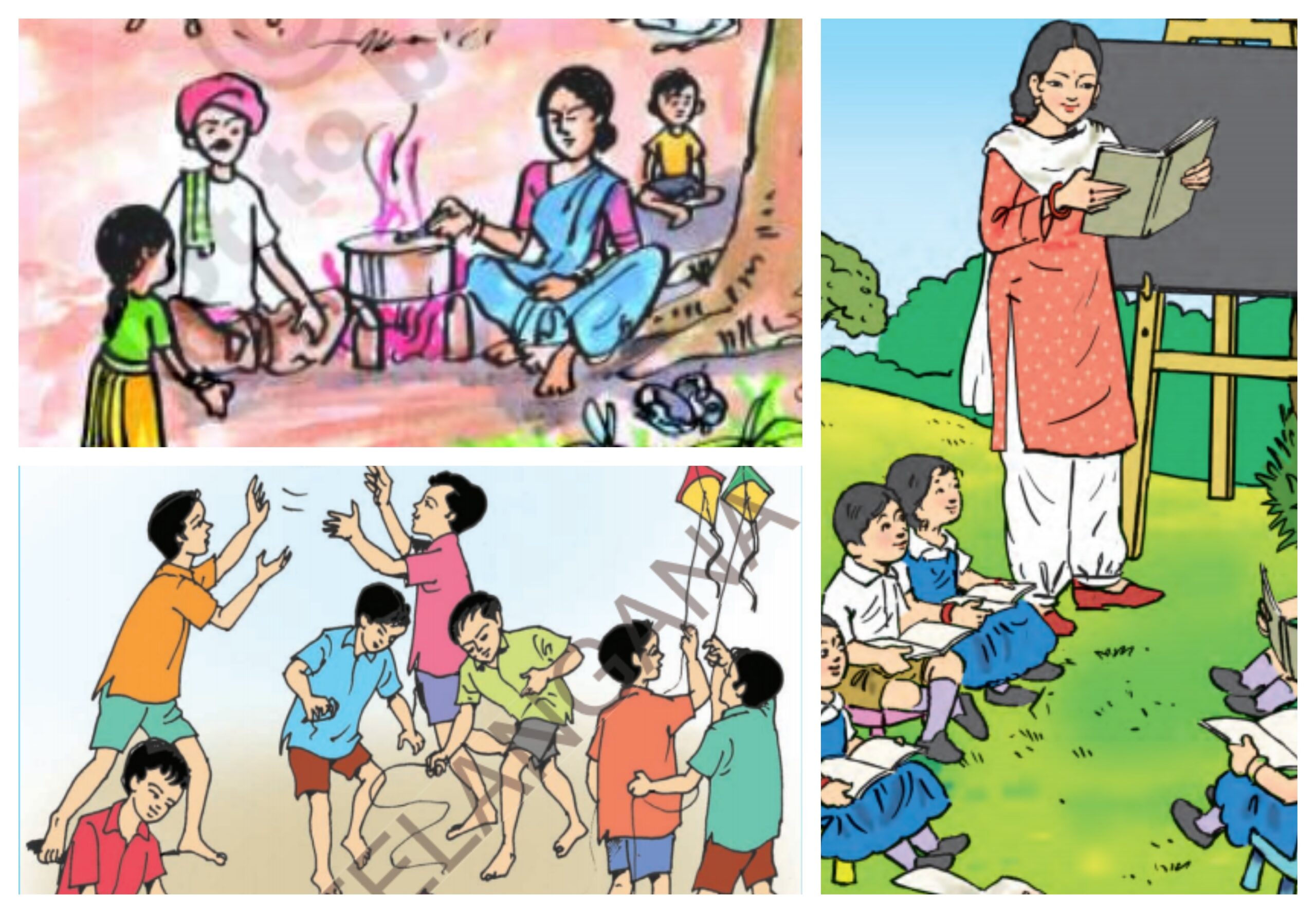
What stands out in these images to you based on the NCF statement? We see a playground with only boys playing and other examples of gender-based roles. Do we really think the current education system that uses these textbooks is poised to help children envision a world that upholds our constitutional values?
And so, as we seek to reform education, it is pertinent to note that curriculum formation is inherently subjective. The process is limited by the perspectives of the committee members or textbook authors—which is why it often underdelivers on its promises. If that’s the case, how do we ensure that the processes we use to define “education” truly serve their purpose of teaching students effectively?
For more on how to reform India’s education system, curated by The Bastion and the Madhi Foundation under ‘The Five Tenets of Education Reform’, click here.
Featured image courtesy of Pippa Ranger/Department of International Development (CC BY-SA 2.0) | Views expressed are personal.
[1] The NCERT defines the curriculum. The syllabi and textbooks are defined by the NCERT at the national level for CBSE schools, and SCERTs in every state for the state-board schools.
[2] A keen reader may observe that we are not talking about posing a question in the syllabus or textbook. This is because the statement in the curriculum is for all primary grades. So, technically, posing can be taught in Grade 1 or even in Grade 5. This is another decision that syllabus creators have to make based on development benchmarks. For these specific examples, NCERT addresses this in Grade 4. While Tamil Nadu addresses this in Grade 2 as per the syllabus outlines.


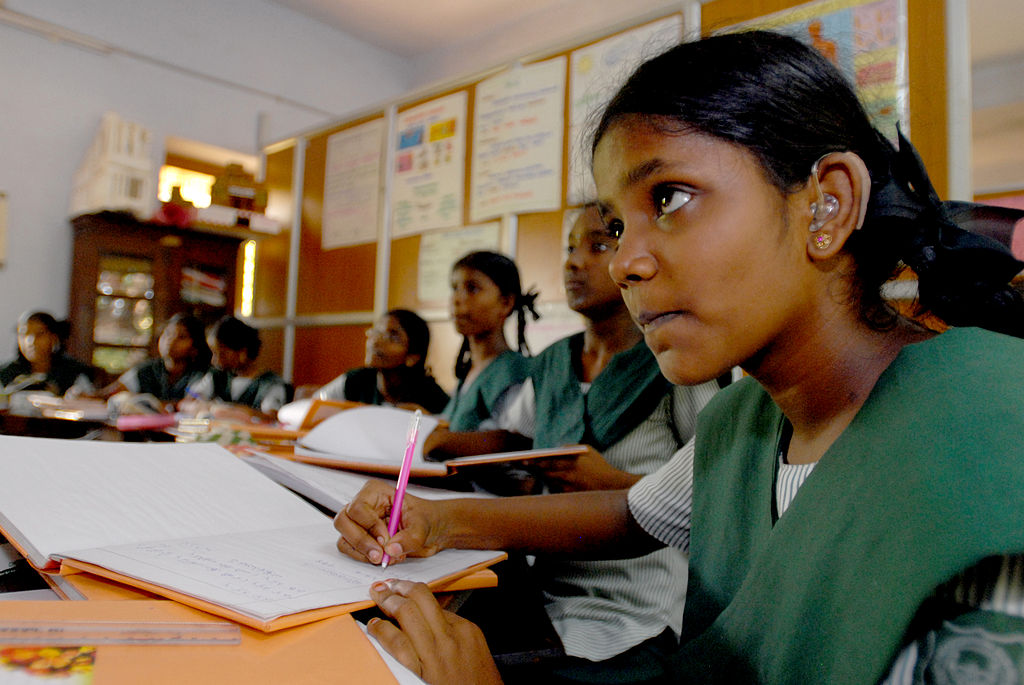




What an great blog!
If you want to end your anxiety regarding your children’s basic concepts understanding, please check out the My Guru Class site given below. It will help your kids with their foundations and give them a fair reasoning to prepare for the various competitive exams!
What an amazing blog! This gives a lot a clarity regarding the various subjects. If you want to end your curiosity regarding your children’s basic concepts understanding, please check out the My Guru Class site given below. It will help your kids with their foundations and give them a fair reasoning to prepare for the various competitive exams!
[…] This is the second instalment of a two-part series on how and why our textbooks fail to meet the lofty ambitions set by national education policies. Click here to read part one. […]